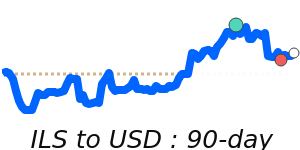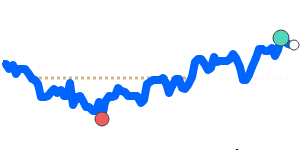The USD to ILS exchange rate currently shows a bearish bias. Key drivers include the expected interest rate cuts by the Federal Reserve, which may weaken the USD. The strengthening of the shekel is also influenced by improved economic forecasts for Israel, with a significant GDP growth projection for 2026. Furthermore, geopolitical stability following the Gaza ceasefire reduces the shekel's risk premium, enhancing investor confidence.
The near-term trading range for USD to ILS may see fluctuations due to these factors, likely remaining below recent highs. Upside risks could arise from a stronger-than-anticipated US economic rebound, while downside risks entail a continuation of the Federal Reserve's dovish (cautious) stance on rates, further pressuring the dollar.
Currently, the USD/ILS rate trades at 3.1691, about 2.2% lower than its three-month average of 3.2398, indicating a relatively stable market over this period.


